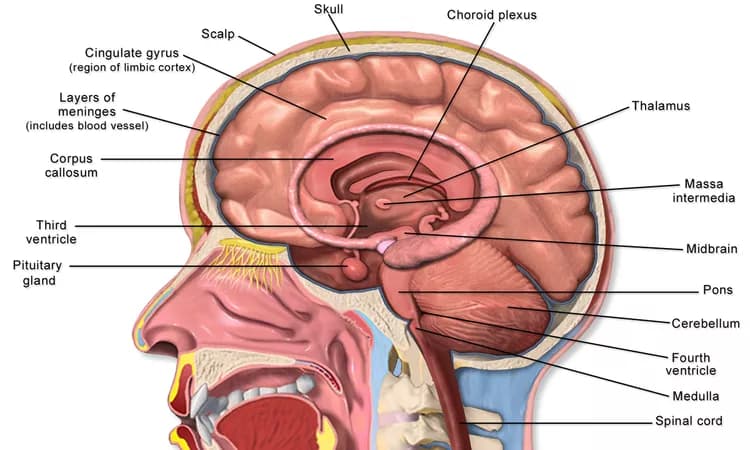
Biology Of Childhood Brain Tumor Subtypes Offers Clues To Precision Treatments
Researchers investigating pediatric low-grade gliomas (PLGG), the most common type of brain tumor in children, have discovered key biological differences in how mutated genes combine with other genes to drive this childhood cancer. By shedding light on subtle distinctions in tumor biology, these findings offer clues to designing more effective anticancer treatments to precisely target tumors in individual patients.
"Carefully defining the molecular landscape of these tumor subtypes may guide us in pediatric precision medicine, to better treat children with brain tumors," said Payal Jain, PhD, a postdoctoral researcher at Children's Hospital of Philadelphia (CHOP).
Jain, a former graduate student in the Perelman School of Medicine at the University of Pennsylvania, is the first author of two recent PLGG studies, with colleagues from CHOP, Penn and other institutions.
The first study, published Aug. 14 in Oncogene, was co-led by Adam C. Resnick, PhD, co-director of the CHOP's Center for Data Driven Discovery in Biomedicine (D3b), and Angela J. Waanders, MD, MPH, director of clinical research for D3b along with senior author Phillip B. Storm, MD, Division Chief of Neurosurgery at CHOP and co-director of D3b. Neuro-oncology researchers Resnick and Waanders also were co-senior authors of a second study, published Sept. 15 in Oncotarget.
Both papers analyzed members of the RAF gene family that play key roles in driving cancer. Two related genes, CRAF and BRAF, express their respective proteins, CRAF and BRAF, which are signaling proteins called kinases. A mutation in either gene causes it to combine with a partner gene to express an abnormal fusion protein that acts along a cellular growth pathway to result in cancer.
In the Oncogene study, the research team found key distinctions in how these mutated genes give rise to PLGGs, a varied group of cancers that collectively account for the most common brain tumor in children. Although PLGGs are often slow-growing, they may disrupt hormones and lead to blindness or coma, and can occur in locations where they can't be surgically removed.
Although BRAF gene fusions were well known to be involved in PLGGs, the study team found important differences in a related gene, CRAF, in which mutations can also lead to this type of glioma. One crucial distinction is that CRAF-fusions may not respond as well as BRAF-fusions to anticancer drugs called RAF inhibitors.
Part of the reason for the difference in drug response, say the authors, is that the fusion partner -- the non-kinase gene that BRAF or CRAF combines with -- alters the tumor's response. "We showed for the first time that the non-kinase fusion partner has functional significance -- affecting how the gene fusion-driven tumor responds to therapy," said Waanders, who added, "This means that we need to carefully classify these tumors to better predict whether a patient is likely to respond to RAF-inhibitor therapy."
The study in Oncotarget, by revealing biological mechanisms by which RAF-fusion tumors develop drug resistance, suggests a possible solution: using a combination of drugs to inhibit downstream signals along two cancer-driving pathways, thus bypassing the difference in how RAF inhibitors succeed against CRAF-fusions compared to BRAF-fusions.
"Parsing the molecular details of tumor subtypes and resistance mechanism allows us to better define the therapeutic landscape as we pursue translational research," said Resnick. "Large-scale clinical sequencing and molecular profiling can better inform collaborative programs such as the National Cancer Institute-Children's Oncology Group Pediatric MATCH clinical trials and the Pacific Neuro-Oncology Consortium. Our findings in these new studies will advance our clinical efforts to develop more effective, personalized treatments for children."
Storm, who performs surgery on children with brain tumors, added that, "Better understanding of tumor characteristics, as we found in this research, will help guide our surgical planning and clinical decisions for patients with PLGGs in this current era of target-centric clinical trials and personalized medicine."
Materials provided by Children's Hospital of Philadelphia. Note: Content may be edited for style and length.
Disclaimer: DoveMed is not responsible for the accuracy of the adapted version of news releases posted to DoveMed by contributing universities and institutions.
References:
P Jain, T M Fierst, H J Han, T E Smith, A Vakil, P J Storm, A C Resnick, A J Waanders. (2017). CRAF gene fusions in pediatric low-grade gliomas define a distinct drug response based on dimerization profiles. Oncogene. DOI: 10.1038/onc.2017.276
Related Articles
Test Your Knowledge
Asked by users
Related Centers
Related Specialties
Related Physicians
Related Procedures
Related Resources
Join DoveHubs
and connect with fellow professionals

0 Comments
Please log in to post a comment.